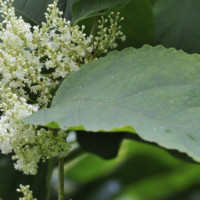
Research conducted by the University of Leeds and infrastructure services firm AECOM found no evidence it caused significant structural damage.
The ecologists found Japenese knotweed was less likely to cause damage than trees, climbers and other shrubs and that the seven metre rule was too strict.
As a result, mortgage lenders have been urged to reassess their lending policies taking into account the new data.
Arnold & Baldwin Chartered Surveyors managing director Joe Arnold said: “Currently, mortgage lenders will often require evidence that a treatment programme is in place to control Japanese knotweed if it is identified at a property and the stigma associated with the plant can negatively impact property prices even after action has been taken.
“So it will be interesting to see whether the results of this study are reflected by a change in mortgage lender criteria and a shift in the way that homeowners and homebuyers think about Japanese knotweed,” he added.
Not a robust tool
The study looked at two groups of properties.
In the first, 68 long-term abandoned pre-1900 residential properties in Northern England were checked.
While knotweed was identified within seven metres of 18 of the properties, it was linked to less damage than the trees, climbers and shrubs also found there.
In a separate survey, of 26 contractors who provided records of 81 excavations, results showed that Japanese knotweed root rhizomes rarely extended more than 4m from above-ground plants.
And the researchers also found no support in academic literature for the idea that Japanese knotweed was a major cause of damage to property.
Overall, they established it was less likely to cause damage than many other common species and added that the seven metre rule was now not a statistically robust tool for estimating how far the plant’s rhizomes are likely to reach underground.
Strict lending policies
AECOM principal ecologist Dr Mark Fennell, who led the study, said: “Our research sought to broaden existing knowledge about the risk to buildings of Japanese knotweed compared to other plants.
“We found nothing to suggest that Japanese knotweed causes significant damage to buildings – even when it is growing in close proximity – and certainly no more damage than other species that are not subject to such strict lending policies.”
Co-author Dr Karen Bacon, from the University of Leeds’ School of Geography, said: “The negative impact of Japanese knotweed on such factors as biodiversity and flooding risks remains a cause for concern.
“But this plant poses less of a risk to buildings and other structures than many woody species, particularly trees.
“Japanese knotweed is capable of damaging built structures, but where this occurs, it is usually because an existing weakness or defect has been exacerbated,” she added.















